For our fifth annual roundup of the most influential people on the Internet, TIME evaluated contenders by looking at their global impact on social media and their overall ability to drive news. Here’s who made this year’s unranked list.
Lil Nas X

For proof that viral fame can lead to bona-fide stardom, look no further than Atlanta rapper Lil Nas X. Born Montero Lamar Hill, the rapper developed his online fanbase (and his fluency in the quick, satiric language of the internet) by curating memes on Twitter. Then came “Old Town Road.” The track, made to a $30 beat and released in late 2018, first gained steam as the soundtrack to the “#yeehaw” challenge on video-sharing app TikTok, then for getting removed from Billboard’s Hot Country chart, kickstarting a conversation about Nashville’s exclusion of black artists. Shortly after, Lil Nas X recruited Billy Ray Cyrus for a remix, which has now topped the Billboard Hot 100 for 15 weeks and logged 9 of the 11 biggest streaming weeks of all time. More recently, Lil Nas X made headlines for publicly coming out as gay, telling BBC Breakfast that his decision to share his truth was “opening doors for more people.” —Raisa Bruner
Rep. Alexandria Ocasio-Cortez

Alexandria Ocasio-Cortez may be a junior member of the House of Representatives, but when it comes to social media prowess, her seniority is virtually unparalleled. Ocasio-Cortez, who even offline is often referred to by her Twitter handle “AOC,” has nearly 4.8 million followers on the platform, more than most members of Congress. In January, just weeks after she was sworn in as the youngest Congresswoman in U.S. history, Ocasio-Cortez co-hosted a session for her peers about social media best practices, explaining the importance of being “authentic.” And though she’s made some online missteps during her tenure on Capitol Hill — like identifying her Democratic colleague Rep. John Yarmuth as a Republican while slamming older male legislators — Ocasio-Cortez has also expertly harnessed viral tropes to draw attention to subcommittee hearings and granular policy debates that have typically been relegated to the confines of C-Span: an Instagram video of questions she asked at a hearing about cannabis in February has amassed over three million views. —Alana Abramson
President Donald Trump

President Donald Trump has ramped up his digital presence over the past year. On March 17, he sent out 29 tweets in a single day, including a tweet pondering whether federal agencies should investigate Saturday Night Live for criticizing him and a retweet of Jack Posobiec, a conservative news host who promoted the Pizzagate and Seth Rich conspiracy theories. But that still paled in comparison to his output on May 1, when he posted a whopping 84 times. (There may be a downside to the increased frequency: a CrowdTangle report cited by Axios indicates that the president’s overall interaction rate has fallen.) Regardless, Trump’s tweets initiate a feedback loop of cable news segments, Google search results and online news stories, giving his short missives longer legs and allowing his online influence to dwarf that of his political rivals. This year in particular, Trump used his massive online megaphone to criticize Special Counsel Robert Mueller’s investigation into his campaign’s connections to Russia and increased his attacks on social media companies, arguing that conservative voices are being unfairly targeted for censorship online; the claim has not been proven. —Brian Bennett
BTS
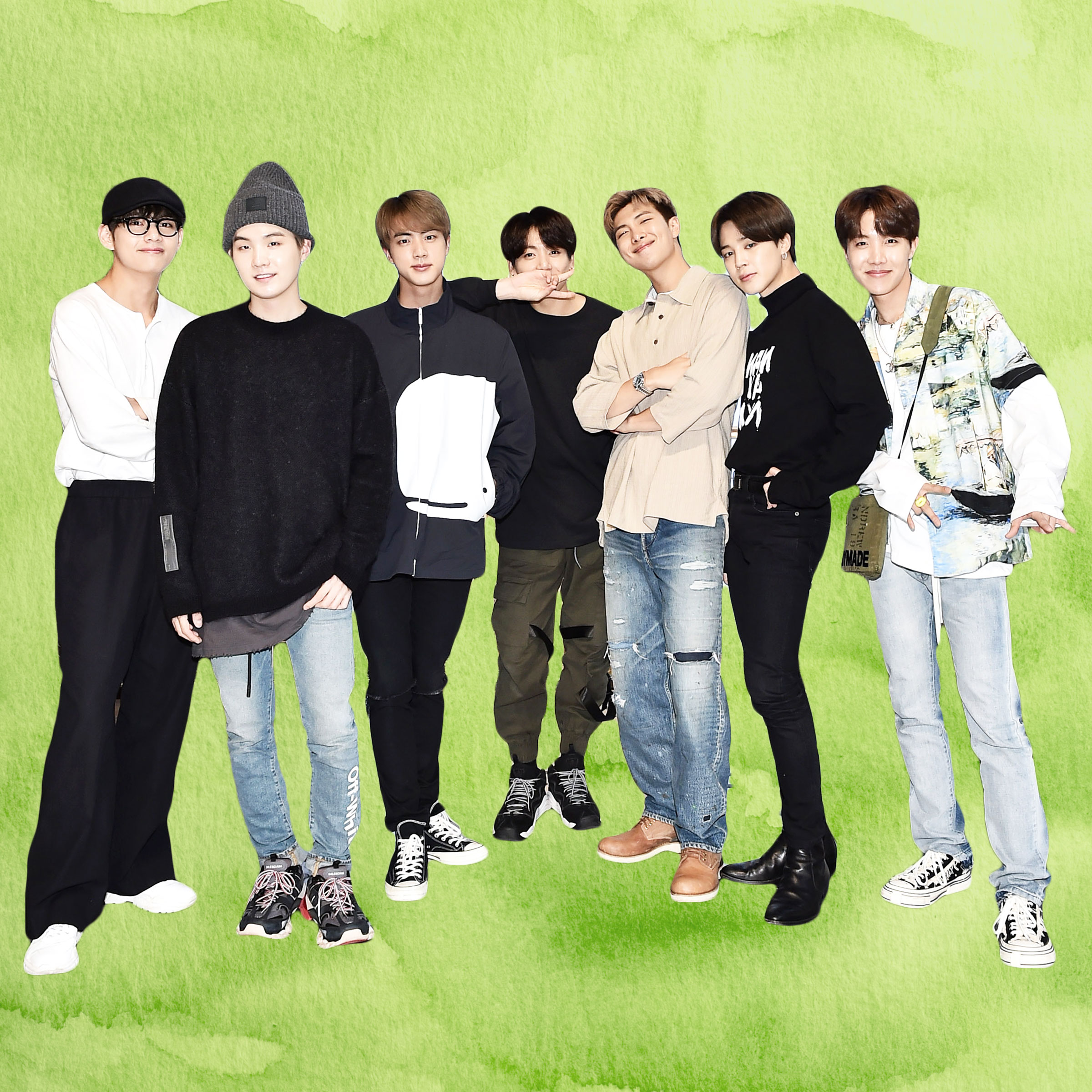
South Korean supergroup BTS are well on their way to becoming a household name—if they aren’t already—thanks to their millions-strong fanbase of digital natives, called “ARMY,” who avidly consume and promote their content online. In 2019, having helped BTS top Billboard’s Social Artist chart for over two years, the ARMY propelled the group’s members—RM, J-Hope, Suga, Jung Kook, Jimin, Jin and V—to even greater success. Among the group’s latest accolades: releasing three Billboard No. 1 albums in a single year; debuting the “Boy With Luv” music video, which logged a record-setting 75 million views in its first 24 hours; and collaborating on a mobile game in which fans play the role of the group’s manager that topped the Apple App Store charts in a number of countries. —Raisa Bruner
Rahaf Mohammed

Reasoning that she had “nothing to lose,” teenage runaway Rahaf Mohammed opened a Twitter account in January and catapulted her plight—and the status of Saudi women—onto the world stage. Then 18, Mohammed had escaped a family she described as abusive and a system in which male guardians are given authority over their female relatives’ life decisions, including the ability to travel abroad. She found herself alone in Bangkok, stripped of her passport and facing imminent deportation to a homeland known for disappearing renegade women and killing dissidents. Online, she rallied approximately 45,000 followers in a single day, and the hashtag #SaveRahaf amplified her plea for asylum, catching the attention of the U.N. Refugee Agency, which eventually helped place her in Canada. In the months since, a growing number of Saudi runaways have also used social media to raise awareness about the treatment of Saudi women and publicize their own pleas for asylum. Riyadh clearly feared this outcome. Shortly after Mohammed began her Twitter campaign, a Saudi chargé d’affaires bemoaned that authorities had seized her passport instead of her phone. Now, according to a Wall Street Journal report, officials in Saudi Arabia may be considering relaxing restrictions on women’s ability to travel. –Laignee Barron
Ariana Grande

Ariana Grande didn’t have to put out a second album, Thank U, Next, just months after her Grammy-winning 2018 project Sweetener. But she did, and at one point in February held all three top spots on the Billboard Hot 100 chart — the first artist to do so since the Beatles. Her success was buoyed, in part, by hype she built via Twitter call-outs that doubled as song lyrics and music videos designed for (and steeped in) internet culture, including a Mean Girls-inspired concept for the album’s title track. It helps, of course, that Grande recently became Instagram’s most-followed musician, giving her an even bigger platform (223 million followers across Instagram and Twitter) to promote her work. —Raisa Bruner
The School Strikers

What started off as a defiant act by a single Swedish teenager has snowballed into an international movement. Over the last eleven months, students inspired by Greta Thunberg and united worldwide by the #FridaysforFuture and #SchoolStrike4Climate hashtags have used social media to organize their own strikes drawing attention to adult inertia on tackling climate change and lowering carbon emissions. Global demonstrations in March drew an estimated 1.6 million people according to organizers, and the movement is calling for a worldwide strike on Sept. 20—with the involvement of adults. Last fall, the school strike movement quickly spread from Sweden to the rest of the globe, including countries in the global south often on the frontlines of climate change, such as Uganda, Bangladesh and Indonesia. When TIME asked Thunberg whom she admired most, her answer was simple: “The young people in developing countries, who sacrifice their education in order to protest against the destruction of their future and world. They are real heroes.” —Suyin Haynes
Liza Koshy

How did a 23-year-old former Vine star get so famous that she was tapped to host Vogue’s Met Gala red carpet and interview Barack Obama? When Liza Koshy was asked a similar question during a WIRED Autocomplete Interview, she responded with a smirk: “I honestly don’t know. You guys have weird taste online.” Koshy revels in the weirdness of Internet culture, which in turn has catapulted her from six-second novelty act to YouTube star to fashion maven to film and television actress (with appearances in Hulu’s Freakish and Tyler Perry’s Boo! A Madea Halloween). Koshy has thrived in each of these spaces—as well as on Instagram (17.9 million followers) and TikTok (14.1 million followers)—but her uproarious and bizarre sense of humor shines most clearly on YouTube. There, she creates frenetic skits stuffed with virtuosic dancing, alter egos, fourth wall-breaking, groan-inducing puns, and plenty of mugging to the camera. Her upcoming role in an Alicia Keys-produced comedy film is yet another sign that her rise won’t slow anytime soon. —Andrew R. Chow
Brian Kolfage

“If you are sick and tired of watching politicians in both parties obstructing President Trump’s plan to build a wall on our southern border, then you’ve come to the right place.” So read the introduction to a GoFundMe campaign started in December by Air Force veteran Brian Kolfage, who wound up raising more than $25 million to help construct Trump’s controversial barrier without government assistance—the largest sum in GoFundMe history. Of course, $25 million is still far short of the $18 billion that Customs and Border Protection estimates it would need to complete the project’s initial phase, and it remains unclear how—or if—Kolfage can make significant progress. (Kolfage says his team broke ground on a small barrier on private land around Memorial Day, but it was not without setbacks: when plans changed over the course of the crowdfunding campaign, $6 million was refunded to donors.) Still, Kolfage tells TIME he remains confident in his plan. “From the day I was injured in Iraq to now,” he says, “I know that no matter what the adversity is, no matter what people say, you can always just keep plugging along.” —Abby Vesoulis
James Charles

After attending the Met Gala in May, James Charles, a beauty vlogger best known as the first male ambassador for CoverGirl, declared to his followers that he wanted to be a “catalyst” for “influencer representation in the media.” He quickly got his wish—but not in the way he intended. The reason: the viral break-up of his friendship with former mentor and fellow beauty vlogger, Tati Westbrook, which started as a niche feud over gummy bear supplement sponsorships and ballooned into a broader discussion about the dark side of influencers and “cancel culture.” The consequences were initially swift for Charles, who lost millions of subscribers and followers amid his feud with Westbrook and decided to cancel his planned 24-city speaking tour. But both parties have since apologized and agreed to move on—a development that was well-received by Charles’ still-massive fanbase, which includes more than 15 million subscribers on YouTube. —Cady Lang
The Duke and Duchess of Sussex

The British royal family is a notoriously tight-knit institution. So when Prince Harry, Duke of Sussex, and Meghan Markle, Duchess of Sussex, launched an independent social media account on Instagram in April, @SussexRoyal, it was bound to make waves. The handle reached 1 million followers in its first six hours, a platform record. (It’s since accrued 9.1 million.) While baby photos are among @SussexRoyal’s draws, most posts are dedicated to the pair’s work as royals. Each month, in an effort to highlight advocates and organizations focusing on issues such as climate change and mental health awareness, the account rotates the users it follows—a savvy strategy that has driven headlines. The Sussexes’ forward-thinking, cause-oriented approach to social media fits neatly with other ways they are establishing their identity beyond the crown. In June, the palace confirmed that the couple will be departing the Royal Foundation, which was started by Prince Harry and Prince William in 2009, to launch their own, separate charitable organization. —Raisa Bruner
Germán Garmendia
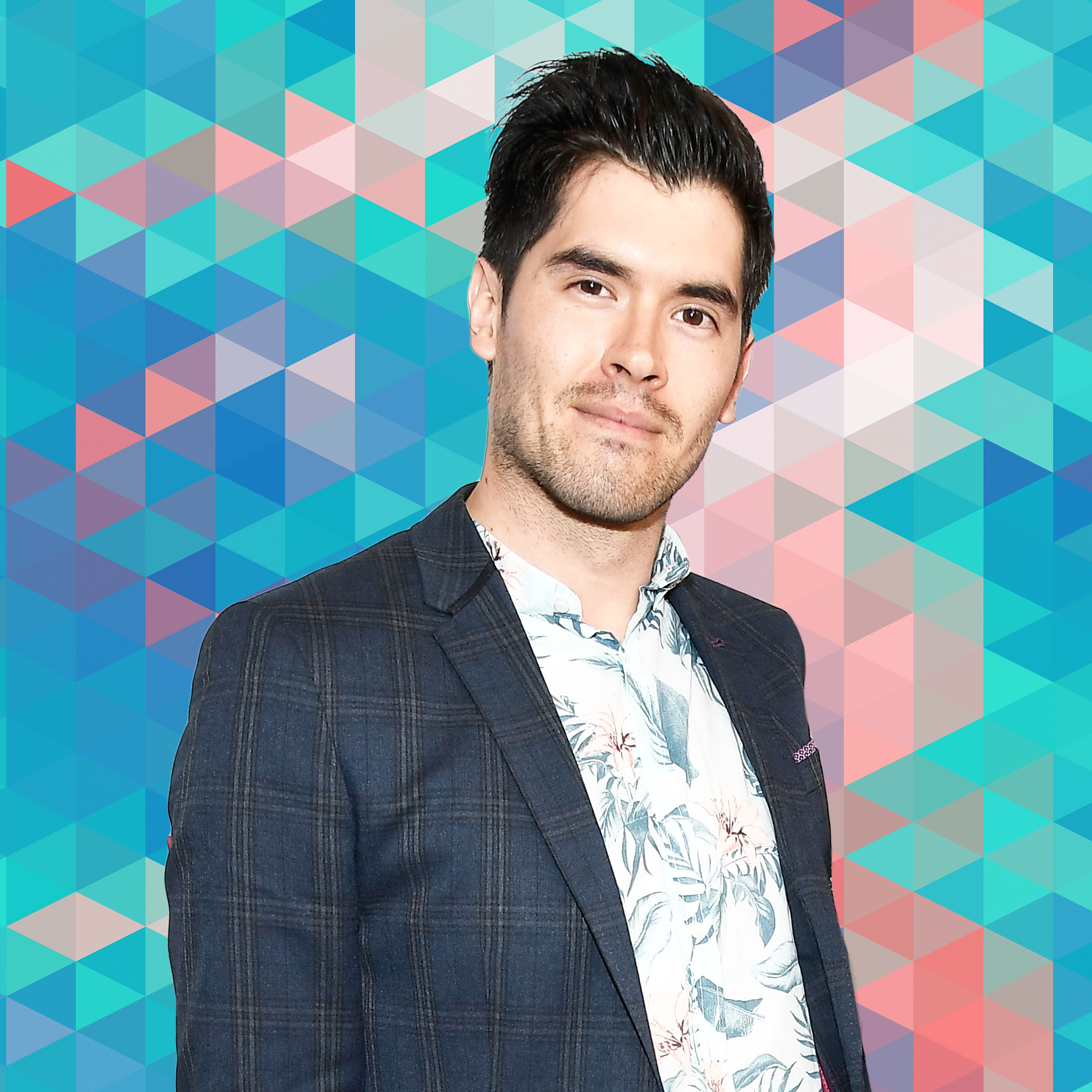
Since uploading his first skit to YouTube in 2011, Germán Garmendia has earned over 13 billion views, making him the world’s most popular Spanish-language YouTuber. In his skits and over-the-top riffs, Garmendia mines humor from everyday topics; while describing how tough he is in a video about how to be sexy, for example, he noted that he only cried a little when Mufasa died in The Lion King and often pushes doors labeled “pull.” Production values have risen on YouTube in the years since he got his start, but despite competition from bigger-budget operations, Garmendia’s main draw as he comments on memes, viral videos, and video games is still his personality. As with many YouTubers, he has also provoked controversy, like when misogynistic comments he made in a 2014 gameplay video resurfaced in late 2018. But his subsequent apology was well-received, and his career hasn’t stalled: in fact, Garmendia released his first novel last year. —Gina Martinez
Cardi B

Cardi B’s rise to stardom can be tracked all the way back to Instagram, where she now boasts more than 47 million followers. As much as the Bronx native’s life has changed in recent years, Cardi’s approach to being online has remained mostly the same—these days, she sandwiches confessional videos and memes between red carpet shots, concert footage and political missives. In January, Cardi made headlines for posting a video criticizing President Trump for not funding the government, “all for a f-cking wall.” The video went viral, and even came to the attention of Sen. Chris Murphy and Sen. Brian Schatz, who publicly debated whether they should retweet the video. In the end, the lawmakers chose not to, but the video still racked up 20 million views on Instagram. —Mahita Gajanan
Chris Godfrey

You may not know the name Chris Godfrey, but you have probably heard of his creation: the World Record Egg, an Instagram post that became the platform’s most-liked image in January. Godfrey, who works at a London advertising agency, launched his campaign with an image of a single egg against a white background and a straightforward appeal: “Let’s set a world record together.” His goal was to gain more likes than Kylie Jenner’s photo of her baby, which had 18 million likes at the time. A week later, he had succeeded; the image has over 53 million likes. Godfrey and his team have pivoted their viral success into interactive content: they featured their fans (called the “Egg Gang”) on Instagram Stories, put out an ad in which the anthropomorphized egg, called Eugene, addressed the importance of mental health and collaborated with DJ Khaled ahead of his album release in the spring. —Raisa Bruner
Carlos Maza

When Vox journalist and vlogger Carlos Maza spoke up about being harassed online, he didn’t just take aim at the perpetrators. He targeted the policy that empowered them. For two years, Maza had been the subject of videos from popular right-wing commentator Steven Crowder, who repeatedly denigrated Maza’s sexual orientation and ethnicity—actions that appeared to violate YouTube’s terms of service. But when Maza reported Crowder, he says YouTube didn’t respond. So at the end of May, Maza went public with his struggles on Twitter. His thread quickly went viral, prompting a new wave of harassment from Crowder fans—and eventually, a pseudo-apology from Crowder and a response from YouTube, which demonetized Crowder’s channel. (YouTube stopped short of banning Crowder outright, arguing initially that, while some of Crowder’s comments were hurtful, its policies were intended to protect free expression, which can include offensive opinions.) In the days that followed Maza’s Twitter thread, YouTube did reveal plans to revisit its harassment policies. But Maza isn’t optimistic about systemic change. “Harassment is really good for engagement,” he tells TIME. —Mahita Gajanan
Zhang Dayi

Media outlets are quick to draw comparisons between Zhang Dayi, one of China’s most prominent social influencers, and fellow e-commerce mogul Kylie Jenner. Zhang has more than 11 million followers on Weibo, where she regularly promotes new products from her clothing, lingerie and makeup lines via livestream videos watched by hundreds of thousands of fans. During last year’s Singles’ Day, China’s biggest annual shopping event, the internet celebrity’s online stores cracked 1 billion yuan—about $145 million —in revenue within half an hour. In April, Zhang traveled to New York with Ruhnn, the influencer marketing startup she works with. There, she rang the Nasdaq bell as the company went public, and she was an apt mascot: since 2017, the earnings Zhang has brought in to Ruhnn—which works with more than a hundred stars —have made up half its annual revenue. —Hillary Leung
JoJo Siwa
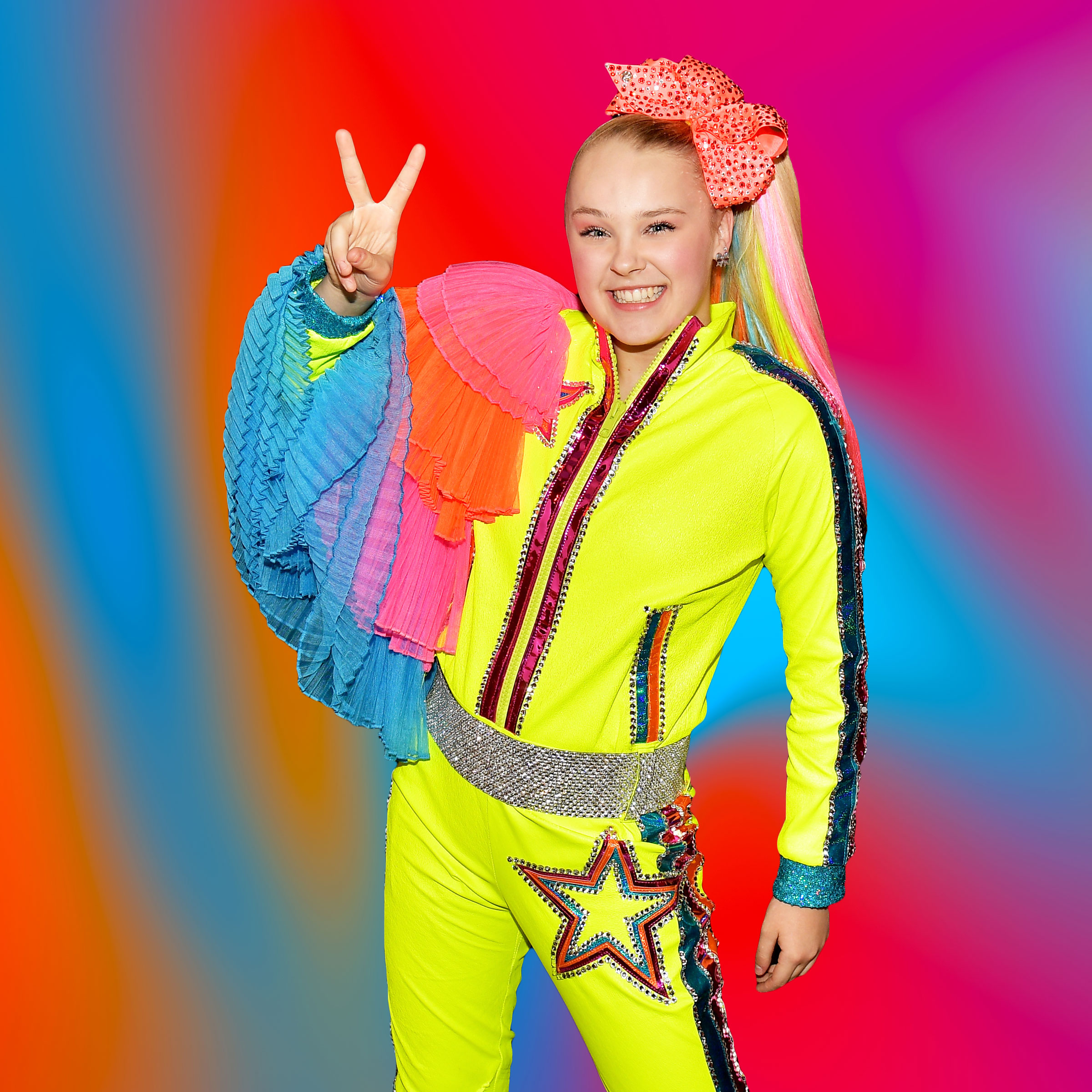
There is no teen star quite like JoJo Siwa, a relentlessly enthusiastic 16-year-old from Nebraska who sings, dances, and vlogs on YouTube and TikTok. She wears bright colors and plays with unicorn toys; the trademark giant bows that she wears became so popular among tweens that they were banned at a number of schools in Great Britain, one of the star’s few controversies. More recently, she has parlayed her online fame into a real-world music career; as part of a larger creative collaboration with Nickelodeon, she has embarked on tour to perform songs like “Boomerang,” a sugary anthem against cyberbullying that has 700 million views on YouTube. But she still makes time to vlog the more mundane aspects of her life, such as bowling or shopping at Target. Her mostly young, fervent fanbase can’t get enough, and she regularly clears 2 million YouTube views a day. —Andrew R. Chow
Ben Shapiro
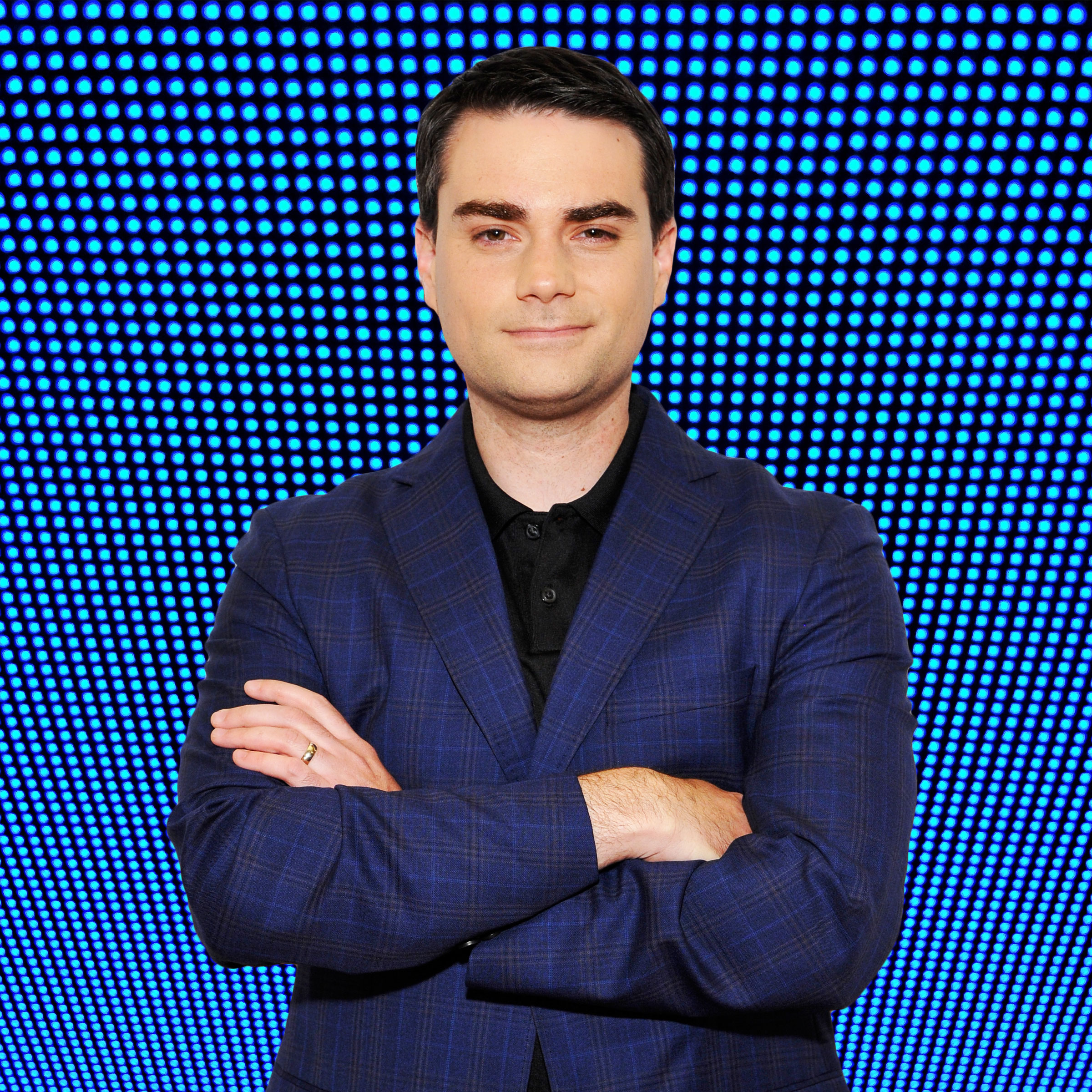
Baby Boomers had Rush Limbaugh as a conservative champion. Generation X welcomed Tucker Carlson. Now, the 32 percent of millennials who lean towards the right can tune into Ben Shapiro. The self-described “Sometimes Trumper” hosts a podcast and radio show with millions of collective listeners, and founded the Daily Wire, a popular online source of conservative news and opinions. Critics describe Shapiro as a political firebrand with trollish tendencies and controversial opinions; supporters see a rising star who is gifted at debating the left. In May, however, Shapiro made headlines for abruptly ending an interview after objecting to the questions posed. “I am not inclined to continue an interview with a person as badly motivated as you,” Shapiro told the BBC journalist. —Abby Vesoulis
DrLupo
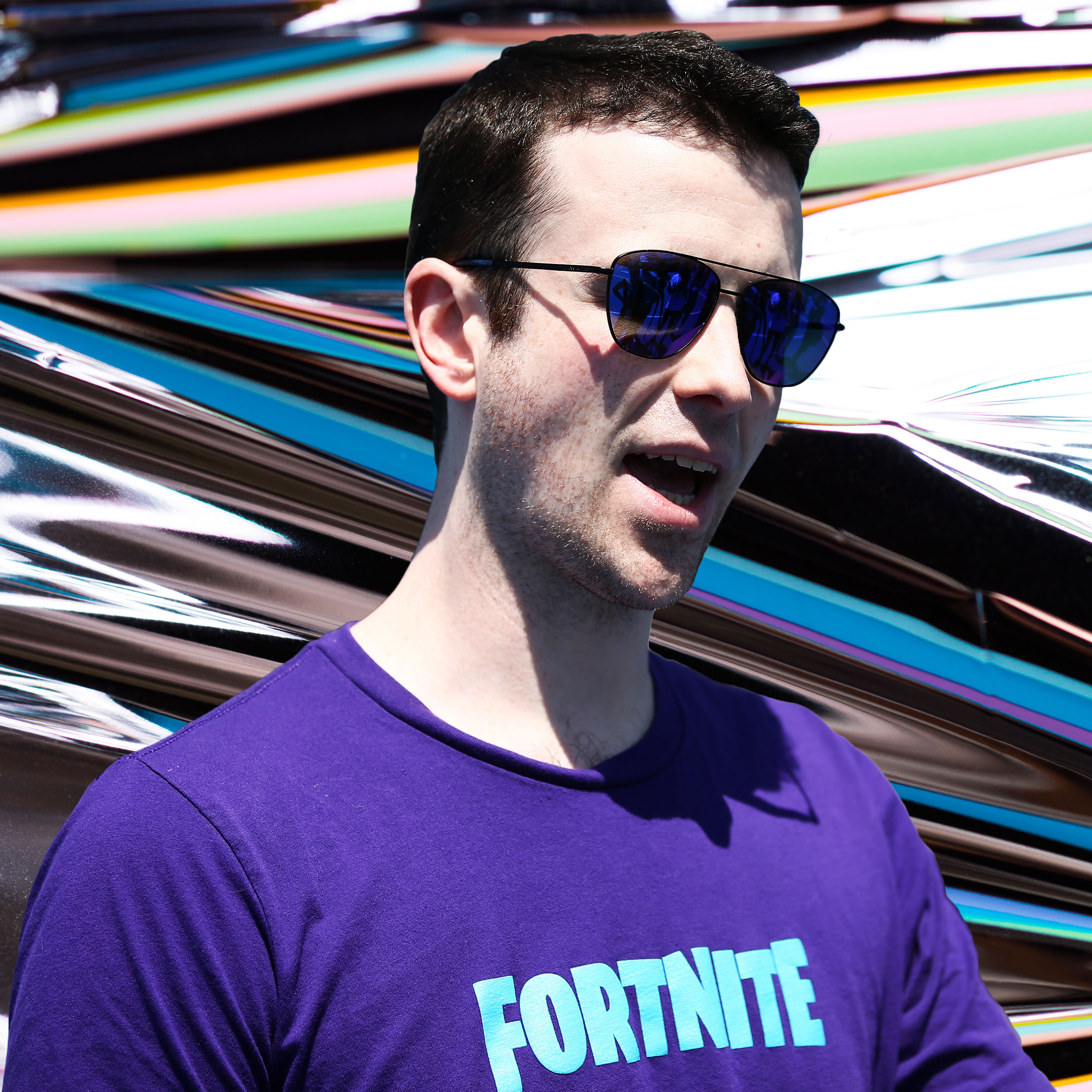
Benjamin Lupo may not be the most-followed gamer on Twitch — that honor goes to Ninja, a fellow streamer featured in the 2019 edition of the TIME 100 — but he may well be the most generous. In July, St. Jude Children’s Research Hospital named Lupo its inaugural Content Creator of the Year in recognition of a record-breaking sum he raised on the charity’s behalf. Each year, top streamers participate in St. Jude’s Play Live, dedicating their gaming broadcasts to the charity and encouraging followers to donate. In 2019, Lupo’s four-hour Play Live stream netted over $920,000, “the most any streamer has raised in event history,” according to a St. Jude’s press release. It wasn’t the first time Lupo (who goes by DrLupo online) had marshalled his fanbase—6.1 million followers across Twitch, Twitter, and YouTube—on behalf of the charity. In December of 2018, Lupo ran a 24-hour stream that raised over $600,000 for St. Jude’s. —Cady Lang
Emma Chamberlain

While still in high school, Emma Chamberlain pioneered an approach to vlogging that shook up YouTube’s unofficial style guide. Two years and 8 million subscribers later, the 18-year-old is being described as the most important person on the platform. In contrast with creators who polish their vlogs to high sheens, Chamberlain popularized a normcore-adjacent aesthetic. A typical Chamberlain video augments stream-of-consciousness narration of her daily life with fast-paced jump cuts and grainy distortions, zooming in on minor gaffes, like burps, that her peers choose to edit out. The result feels like a rejection of the slickness that typifies influencer culture, although each video is still very carefully constructed: Chamberlain told the New York Times that she can spend as many as 30 hours editing a single upload. The hard work is paying off in reach and recognition. Chamberlain’s videos have already been viewed over 785 million times, inspiring other creators, including model Karlie Kloss, to follow her (more casual) lead. —Cate Matthews
Hong Kong Protesters

The movement to preserve Hong Kong’s freedoms is leaderless by design. But while there’s no single organizer at the center of the demonstrations sparked by the controversial extradition bill, there is still a center to much of their organization: online platforms put to effective use by protesters who want to stay both active and anonymous. Users on Internet forum LIHKG and encrypted messaging app Telegram have been tied to everything from a march past foreign consulates to a siege of police headquarters. In an exchange with TIME over the app, an administrator of a Telegram channel linked to the protests described the process as “more of a direct democracy.” Users upvote threads on LIHKG to indicate support for a suggested course of action, which helps push the topic to trend and draw more attention. Telegram’s polling function and the ability to broadcast messages in channels and discuss plans in chat groups allow protesters to promptly mobilize or change strategies. Other aspects of the demonstrations are also coordinated online, including relaying reminders of upcoming protests, sharing legal aid resources and, more recently, offering counseling services and emotional support. Arrests have been made and some escalation tactics, such as the storming of the legislature, have drawn backlash, but the protesters, empowered by their crowd-sourced approach, vow to keep up the fight. “We believe in the power of people because when we are a collection of minds, we must be able to make better decisions than maybe just a group of students or leaders,” pro-democracy activist Ventus Lau told TIME.
Yashar Ali

Few journalists direct virtual attention quite like Yashar Ali, who routinely uses his platform—more than 425,000 followers on Twitter—to break news (the dates of the first Democratic National Debates, the revelation that Les Moonves attempted to derail Janet Jackson’s career after her infamous 2004 Super Bowl performance) and start viral conversations about everything from living with ADHD to how many towels two adults should own (Yashar thinks the correct answer is over 50). Earlier this year, as thousands of people pledged funds to rebuild Notre Dame Cathedral, Yashar also helped mobilize a crowdfunding effort that raised over $2 million for three historically black churches in Louisiana that had been destroyed in recent fires. But Yashar—who writes for outlets such as New York Magazine and HuffPost—says his pet cause is promoting elephant rescue and conservation programs. “The ability to raise, you know, tons and tons of money just by tweeting about elephants,” he tells TIME, “it really is the greatest privilege of this power that I’ve been given.” —Abby Vesoulis
Jameela Jamil

Jameela Jamil, who rose to prominence as an actor on NBC’s The Good Place, is now one of the internet’s most outspoken advocates for body positivity. Jamil has made headlines for using her platform—nearly 3 million followers across Instagram and Twitter—to call out celebrities like Cardi B and the Kardashian family for endorsing weight loss products and slam airbrushing for being “weaponized” against women. Some critics have dismissed Jamil’s viral remarks as opportunistic, arguing that she benefits from the privilege of being conventionally attractive, even as she rails against the promotion of narrow beauty ideals. But Jamil, who promotes a message of self-acceptance, says being vocal is her way of helping others who might struggle with the same body issues she has battled in the past, such as an eating disorder. And last year, she started “I Weigh,” an online community where people can share how they measure themselves beyond the scope of their weight. “Every time I speak out, my shame shrinks a little bit more,” she tells TIME. —Mahita Gajanan
Ady Barkan

When Ady Barkan was diagnosed with amyotrophic lateral sclerosis, or ALS, in 2016, he decided to dedicate what time he had left toward fighting for “Medicare for All” and other progressive priorities. Now he’s being described as “the most powerful activist in America.” Barkan’s first brush with fame came in 2017, when a video of his chance exchange about health care with then-Arizona Sen. Jeff Flake went viral. Since then, he has leveraged his growing social media following to advocate for health care reform and, in 2018, he spearheaded a crowdfunding campaign intended to dissuade Sen. Susan Collins from voting to confirm Brett Kavanaugh to the Supreme Court. (The $4 million raised is now pledged to her 2020 challenger.) “Coming face to face with my own mortality has sharpened my focus on what really matters,” he tells TIME over email. “I want to know that I’ve done everything I possibly could to leave this world better than I found it.” —Mahita Gajanan
Jada Pinkett Smith

How can a talk show succeed in the internet age? Look no further than Facebook Watch’s Red Table Talk, which Jada Pinkett Smith hosts alongside her daughter Willow and mother Adrienne, each bringing a different generational viewpoint to a variety of hot topics. In one episode, the hosts talk about unconventional lifestyles with a “throuple” (a three-person romantic relationship); in another, they interview women who were forced into marriage as children. After each episode, fans continue the discussions in Red Table Talk’s companion Facebook Group. Since its debut in 2018, the Daytime Emmy-nominated series has become one of Facebook’s most popular originals. Its biggest episode: Jada’s one-on-one interview with Jordyn Woods, the Kylie Jenner comrade who was accused of hooking up with Khloe Kardashian’s then-boyfriend Tristan Thompson. The emotional conversation garnered nearly 33 million views and more than 250,000 comments. —Alejandro de la Garza
More Must-Reads from TIME
- Caitlin Clark Is TIME's 2024 Athlete of the Year
- Where Trump 2.0 Will Differ From 1.0
- Is Intermittent Fasting Good or Bad for You?
- The 100 Must-Read Books of 2024
- Column: If Optimism Feels Ridiculous Now, Try Hope
- The Future of Climate Action Is Trade Policy
- FX’s Say Nothing Is the Must-Watch Political Thriller of 2024
- Merle Bombardieri Is Helping People Make the Baby Decision
Contact us at letters@time.com